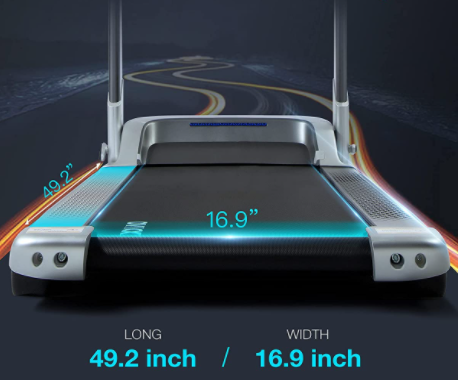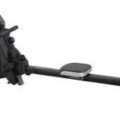If you have problems or issues with your treadmill belt, then please make sure to view the videos outlined below which cover the main issues that you may come across be it aligning the belts, fixing the belts, adjusting the belts or even replacing the treadmill belts.
Treadmill Belt Problems
Video 1 - How to adjust a Treadmill Belt
How to Fix Problems with Treadmill Belts
Treadmill belts are an essential component of the machine, and if they develop problems, they can impact the performance of the entire treadmill. However, many problems with treadmill belts can be fixed relatively easily with a few simple steps so here are some ways to fix problems with treadmill belts that we hope can help you out in some small way…
View also: Our list of Top Treadmills here
Belt Alignment
One of the most common problems with treadmill belts is that they are not properly aligned. This can cause the belt to slip or become uneven, which can impact the performance of the machine. To fix this problem, start by checking the alignment of the belt. If it is not aligned, use the adjustment screws to make the necessary adjustments. A properly aligned belt should be in the centre of the deck and have an even gap between the belt and the sides of the deck.
Belt Tension
Another common problem with treadmill belts is that they are too loose or too tight. If the belt is too loose, it can slip or become misaligned. If it is too tight, it can cause excessive wear and tear on the belt and motor. To fix this problem, start by checking the tension of the belt. If it is too loose, tighten it using the adjustment screws. If it is too tight, loosen it until it has the proper tension.
Belt Lubrication
Another issue that can cause problems with treadmill belts is a lack of lubrication. Over time, the belt can become dry and start to crack, which can impact its performance. To fix this problem, apply a silicone-based lubricant to the belt. This will help reduce friction and prolong the life of the belt.
Video 2 - How to fix a Treadmill Slipping Belt
Belt Cleaning
Dirt and debris can also cause problems with treadmill belts. To fix this problem, start by cleaning the belt and deck with a soft cloth or brush. This will help remove any dirt or debris that may be causing the problem.
Belt Replacement
If the belt is severely damaged, it may need to be replaced. To replace the belt, start by removing the old belt and cleaning the deck. Then, install the new belt, making sure it is properly aligned and tensioned and this will help ensure that your treadmill operates at peak performance and lasts for years to come.
View also: Best Treadmills here
Video 3 - How to replace a Walking Treadmill Belt
Types of Treadmill Belts
Treadmill belts come in a variety of types, each with its own set of features and benefits. Understanding the different types of treadmill belts can help you make an informed decision when purchasing a treadmill so here are some of the most common types of treadmill belts available in the market
PVC Treadmill Belts
PVC treadmill belts are the most common type of treadmill belt. They are made of a durable PVC material that is resistant to wear and tear, making them ideal for high-traffic gyms and fitness centres. PVC belts are also relatively easy to maintain and clean.
Silicone Treadmill Belts
Silicone treadmill belts are becoming increasingly popular due to their superior durability and low friction. They are made of a high-quality silicone material that is resistant to wear and tear, making them ideal for high-end treadmills. Silicone belts also require less maintenance and are quieter than PVC belts.
Polyurethane Treadmill Belts
Polyurethane treadmill belts are another durable option. They are made of a tough polyurethane material that is resistant to wear and tear, making them ideal for high-traffic areas. Polyurethane belts are also quieter than PVC belts and have a low coefficient of friction, making them ideal for high-speed running.
Nylon Treadmill Belts
Nylon treadmill belts are made of a durable nylon material that is resistant to wear and tear. They are ideal for high-traffic areas and are relatively easy to maintain and clean. Nylon belts also offer a good balance of durability and affordability, making them a popular choice for home treadmills.
Cotton Treadmill Belts
Cotton treadmill belts are the least durable of all the types of treadmill belts. They are made of a cotton material that is prone to wear and tear, making them best suited for low-traffic areas or occasional use. Cotton belts are also relatively easy to maintain and are quiet when in use. When selecting a treadmill belt, consider factors such as durability, maintenance, noise, and cost to determine which type of belt is right for your needs.
View also: Recommended Treadmills here
Video 4 - How to align a Treadmill Belt
How to Change a Treadmill Belt
Changing a treadmill belt may seem like a daunting task, but with the right tools and instructions, it can be done relatively easily so this is a step-by-step guide on how to change a treadmill belt in layman’s terms…
1, Gather the necessary tools - You will need a screwdriver, a wrench, and a replacement treadmill belt. It is important to ensure that the new belt matches the specifications of your treadmill.
2, Turn off and unplug the treadmill - Before beginning the process of changing the belt, ensure that the treadmill is turned off and unplugged from the power source.
3, Remove the motor cover - Using a screwdriver, remove the screws that hold the motor cover in place. Once the screws are removed, carefully lift the motor cover off the treadmill.
4, Loosen the belt tension - Using a wrench, loosen the tension bolts on both sides of the treadmill. This will loosen the old belt and allow you to remove it from the deck.
5, Remove the old belt - Once the tension bolts are loosened, gently pull the old belt off the deck and the rollers.
6, Install the new belt - Carefully lay the new belt onto the deck and align it with the rollers. Ensure that the new belt is properly aligned and tensioned before proceeding.
7, Tighten the belt tension - Using a wrench, tighten the tension bolts on both sides of the treadmill to properly tension the new belt.
8, Reinstall the motor cover - Carefully place the motor cover back onto the treadmill and secure it with the screws.
9, Plug in and test the treadmill - Once the new belt is installed, plug in the treadmill and test it to ensure that it is running smoothly and without any issues.
10, Hired Help - If you are uncomfortable performing this task yourself, consider hiring a professional to complete the job.
Read also: Recommended Ankle Supports here
Community Feedback
Have you any tips yourself when it comes to fixing Treadmill Belt problems? If possible, please share your own tips or suggestions by leaving a comment in the comment box section provided below – so that others in the wider community can learn also








Recent Comments